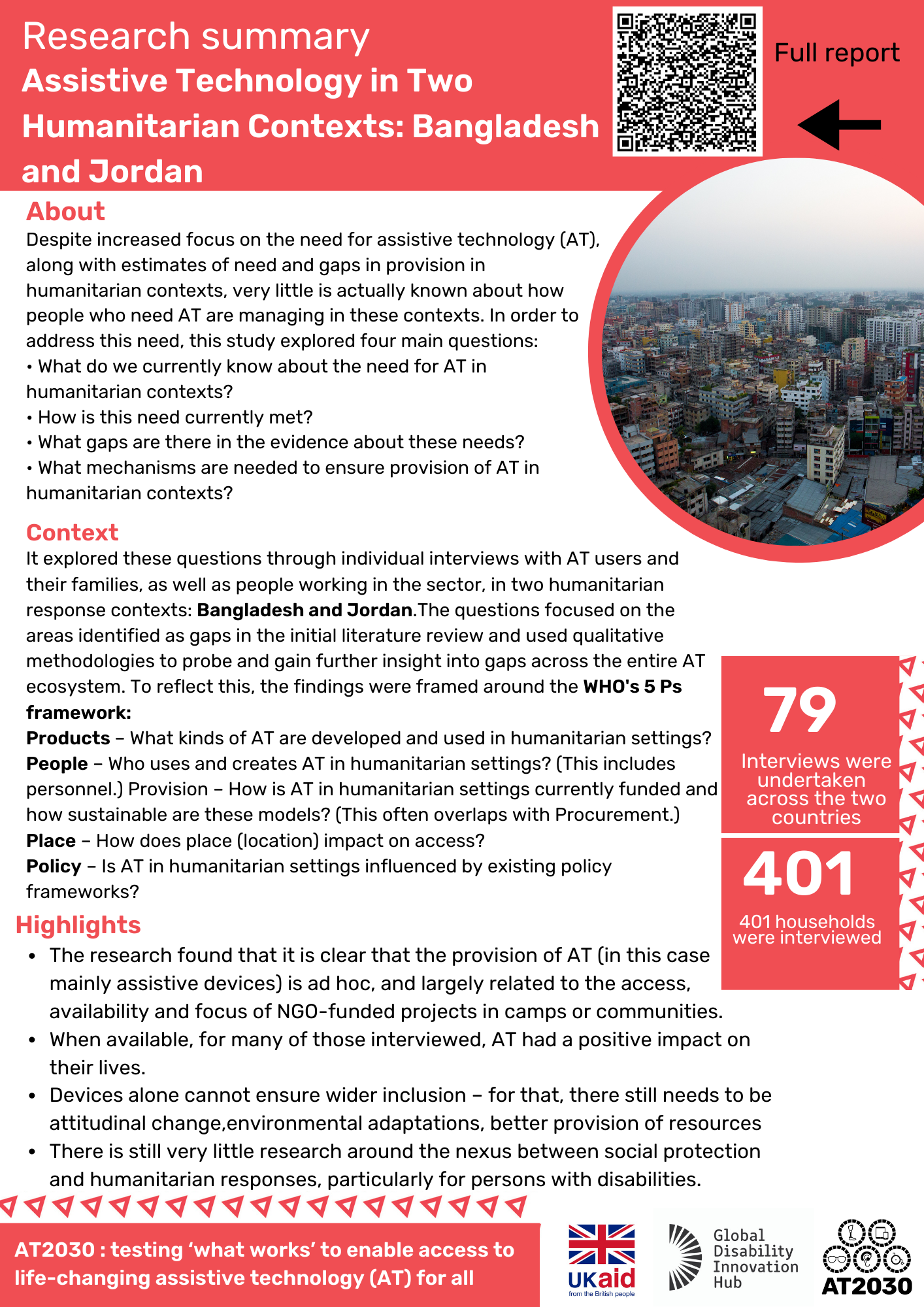Search Our Whole site:
Just Search: Jordan

Assistive Technology in Two Humanitarian Contexts: Bangladesh and Jordan
Despite increased focus on the need for assistive technology (AT), very little is actually known about how people who need AT are managing in humanitarian contexts. This research found that the provision of AT (in this case mainly assistive devices) is ad hoc, and largely related to the access, availability and focus of NGO-funded projects in camps or communities.

Assistive Technology in Two Humanitarian Contexts, Bangladesh and Jordan
Despite increased focus on the need for assistive technology (AT), very little is actually known about how people who need AT are managing in humanitarian contexts. This research found that the provision of AT (in this case mainly assistive devices) is ad hoc, and largely related to the access, availability and focus of NGO-funded projects in camps or communities. Devices alone cannot ensure wider inclusion – for that, there still needs to be attitudinal change, environmental adaptations, better provision of resources (including rehabilitation) and much wider awareness about the policies and legislation that support the rights of persons with disabilities, including those who have crossed an international border to seek safety and security.